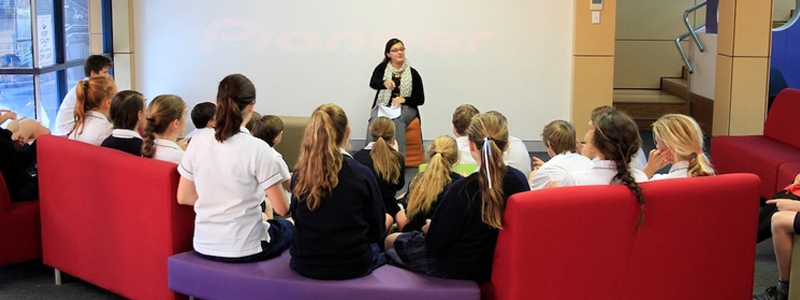Problem: This school challenges traditional learning methods, which are based on expository, theoretical lessons, wherein the teacher has the authority and simply conveys knowledge to the students. The school also goes against the traditional architectural designs of schools, where classrooms are full of desks and students are arrayed in rows. This institute, which is a non-profit organization is run with government funding and enrollment fees, was established in 1981. In 1984, it was moved to its current campus, in Terrey Hills, in Sydney, Australia, where it offers classes for students from kindergarten to high school. In 2005, the school created the Sydney Centre for Innovation in Learning (SCIL) for the development of innovative methods of education.

Solutions: What is notable is that the school puts students at the forefront of their education. Students are the authors of their own educational journey, co-creating their learning process with the teachers, who act as mentors, specialists and guides. The school focuses on critical thinking and on practical, collaborative learning that is based on projects. The aim is to mold young adults that have the qualities of leadership and creativity. Technology is at the forefront of this method of teaching. Students can use their own laptops at school and have access to online resources that enrich their studies. Pupils from fifth and sixth grades, for example, study together in a room known as "the zone". In this room, more than 180 children engage in activities, share computers and ask for help whenever necessary from the six teachers that circulate through the space.
The school offers activities to the students that it refers to as "opportunities". There is also a program in which students visit disenfranchised neighborhoods in countries like Cambodia, Rwanda and Uganda, wherein students can participate in various types of sports, such as swimming, athletics and gymnastics, as well as extracurricular activities, such as music and acting, and are immersed in areas they may be interested in, such as equestrian and diving.
The physical structure was designed to allow for an innovative educational environment. The furniture is modular and customizable. The entire campus has Wi-Fi and its windows are large, allowing for the entrance of natural daylight. The principles that guided the construction of the buildings included the following: the possibility of replicating real life situations, including work experience; the creation of structures that are transparent and democratic, prepared for different types of uses at the same time; classrooms had to be adaptable and ready for change and connected to one another in order to facilitate the use of technology and encourage positive interaction among the students. Classrooms also had to have good acoustics. The school has learning environments that are specially prepared for theater classes and presentations as well as for lessons in the disciplines of design, technology and music.
The Sydney Centre for Innovation in Learning (SCIL) is host to hundreds of teachers from Australia and other countries every year that would like to get to know the school's post-industrial teaching method. They can participate in guided tours, workshops and presentations.

Outcomes: Students feel more motivated and engaged in what they are doing by learning in a manner that is more fun and positive. The majority of the students participate in leadership programs. In 2013, the students' results on national exams were above average in every discipline, including grammar, reading and writing and mathematics. Teachers have a greater feeling of satisfaction in teaching the students and they have the opportunity to participate in courses in which they can develop and improve themselves professionally. Parents make a point of participating more in their child's school by going to meetings and events and by replying to surveys.






